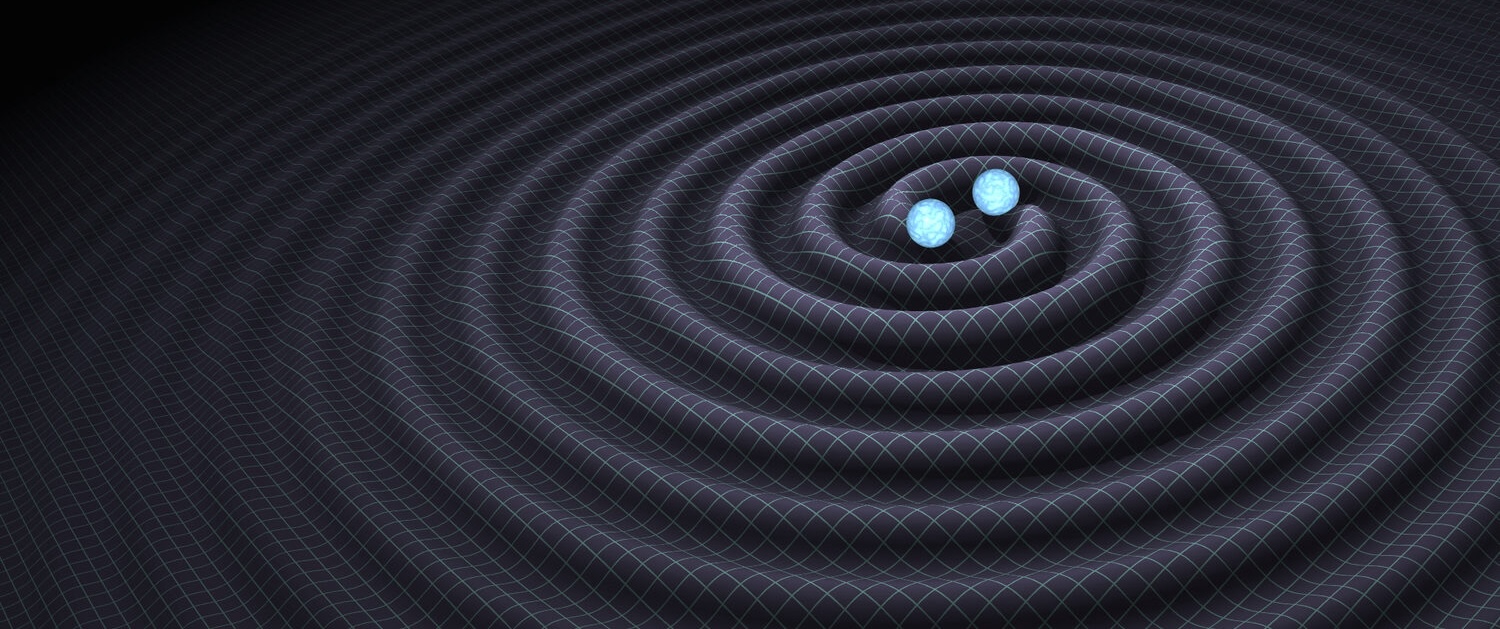Not all gravitational waves are the same. Some are born in cosmic collisions, when black holes or neutron stars (NSs) smash together, sending ripples through space-time. Others, like the ones in this study, are far weaker, but last much longer. These are continuous gravitational waves (CWs): the steady, cosmic “heartbeat” of a spinning, imperfect neutron star.
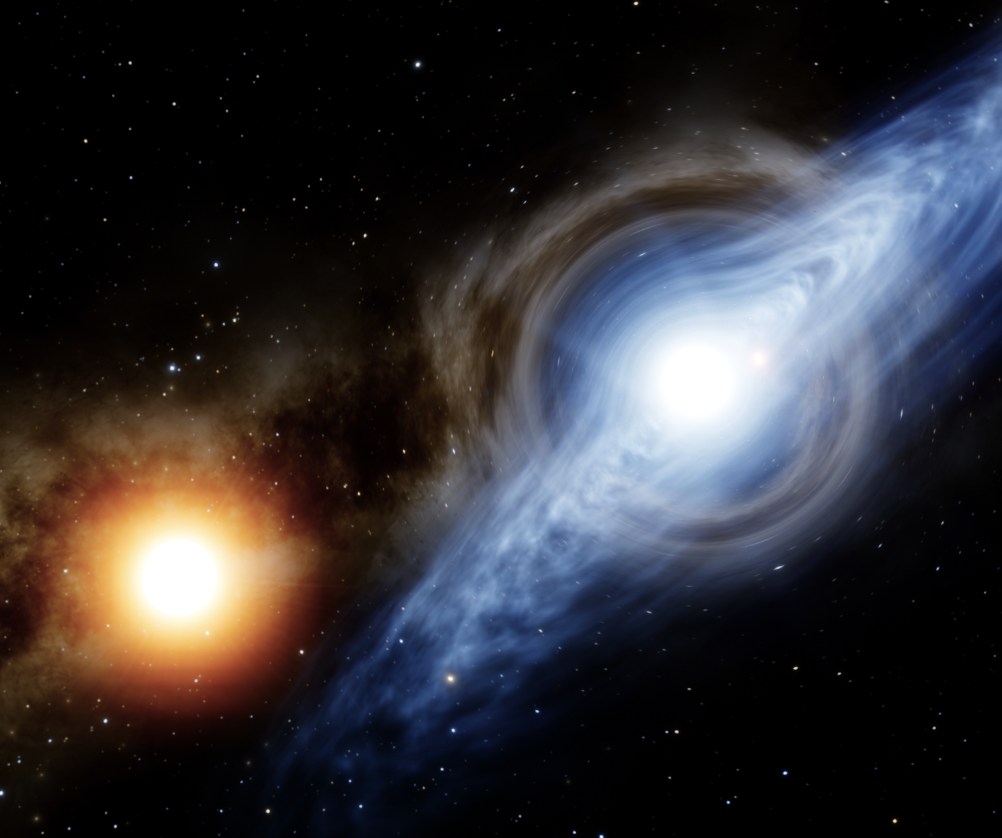
Figure 1: A neutron star (right) in a binary system with a companion star (left). Source: SpaceEngine simulator.
Neutron stars are the dense, compact cores left behind after massive stars, roughly 10 to 25 times the mass of our Sun, end their lives in supernova explosions. Despite being only about 20 kilometers across, they can pack in more mass than the Sun itself. Some spin hundreds of times per second, and if their matter content is not perfectly symmetric, this slight imperfection can make them emit CWs. When a neutron star is part of a binary system (see Figure 1), its signal becomes more complex, but it may also be stronger. This is because mass transferred from a companion star through accretion can speed up its rotation, boosting the likelihood of detectable gravitational waves.
Neutron stars are among the most compact objects in the universe, and detecting CWs from them would give us valuable insight into the physics of matter under extreme conditions. Astronomers estimate there may be around one hundred million neutron stars in our galaxy, yet only a few thousand have been identified. Resolving this discrepancy is one of the main motivations for searches like the one described in this study.
How do we search for these signals?
The more a neutron star deviates from a perfectly spherical shape, the stronger the continuous gravitational waves (CWs) it can produce. To find these faint signals, scientists search through data from the LIGO-Virgo-KAGRA (LVK) gravitational-wave detectors, looking for evidence of CWs from the Milky Way’s neutron star population.
This study focused on unknown neutron stars in binary systems, using data from the first part of the LVK’s fourth observing run, O4a (May 2023 to January 2024). We searched the entire sky, considering all possible source locations, for signals in the frequency range from 100 to 350 Hz. This range corresponds to the most sensitive bands in the O4a run.
The CW signal from the source NS appears as a single, steady frequency in the source’s frame of reference. But our detectors are moving, rotating with the Earth and orbiting the Sun, which causes a Doppler modulation of the signal. For a neutron star in a binary system, its own orbit adds a second layer of Doppler modulation. This “double Doppler” effect means that the signal’s frequency is modulated in a distinctive pattern.
To describe a neutron star’s motion in its orbit, we use three parameters: projected semi-major axis (the size of its orbit as seen from Earth), orbital period (how long it takes to complete one orbit), and orbital phase (its position in the orbit at a given time). In this search, we considered projected semi-major axes between 5 and 15 light-seconds and orbital periods between 7 and 15 days; ranges where many known neutron stars are found.
We used a new analysis tool called FastTracks, a GPU-accelerated pipeline designed to speed up CW searches. FastTracks checks whether tracks in the time–frequency data (see Figure 2) are consistent with what a CW signal should look like.
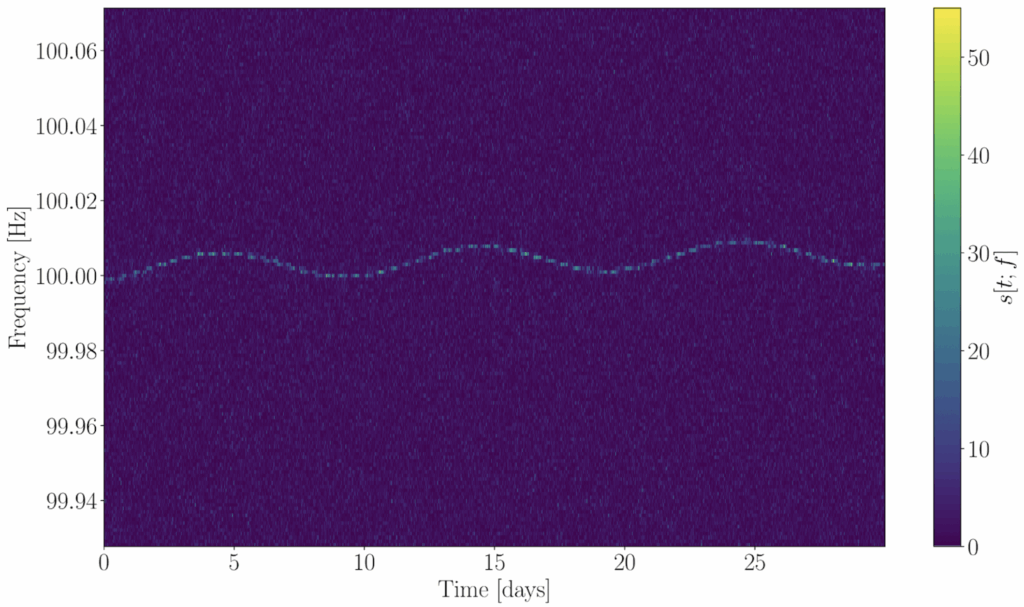
Figure 2: A simulated CW signal in a spectrogram (plot showing signal frequency vs. time). This example shows a neutron star spinning 50 times per second, orbiting a companion every 10 days. Amplitude modulations are due to the detectors’ daily change in sensitivity for that part of the sky.
Our search was performed in the time–frequency domain, using short Fourier transforms (SFTs) of 1024 seconds each. The search consisted of two steps, first, we applied the Hough transform to the data and searched for persistent signals in the spectrogram. In the second step, for the tracks that were most promising, we recomputed them again using the power tracks from the SFTs.
Search sensitivity and astrophysical implications
We did not find any evidence of continuous gravitational wave signals in this search. However, this null result still allows us to determine how sensitive our search was, that is, how far away we could have detected such signals if they had been present. To do this, we injected thousands of simulated CW signals into the data and measured how often our analysis recovered them. From these tests, we determined the smallest signal amplitude our search could detect, achieving the best sensitivities to date for this region of parameter space.
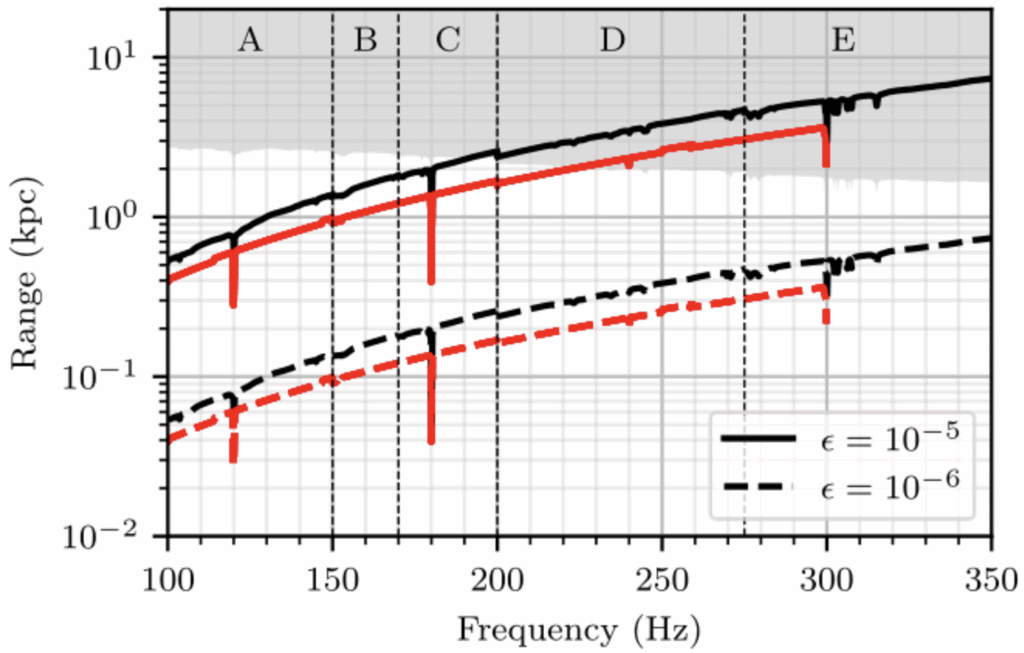
Figure 3: Maximum astrophysical reach in kiloparsecs (kpc) covered by the search as a function of frequency. The two black curves represent different values of neutron star ellipticity. The higher the ellipticity, the stronger CWs would be generated. The gray shaded region indicates distances excluded by the limit imposed by the maximum spindown used in this analysis. The figure shows a comparison between the previous search results (O3a BinarySkyHough, in red), and the results of this present search (in black).
We show the sensitivity of our search in two ways: Figure 3 shows the maximum distance at which our search could detect a neutron star, for different possible values of its ellipticity (a measure of how much the star’s shape deviates from perfect axial symmetry). More deformed stars can produce stronger CW signals, making them detectable from greater distances. Figure 4 presents the same results from a different perspective: the maximum allowed deformation of a neutron star without being detected by our search, as a function of frequency. Our search considered sources with negligible source emission frequency spindown rates (double the spindown rate of the emitting neutron star). In both figures, the shaded regions mark cases with required spindown rates that were beyond the range we explored.
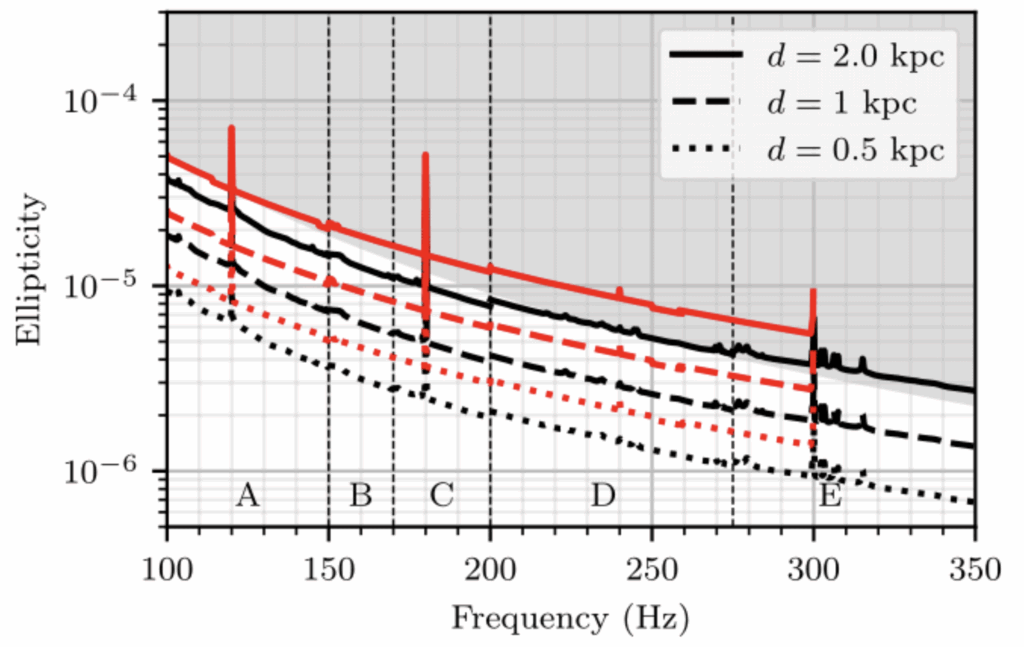
Figure 4: Maximum deformation (ellipticity) allowed for a NS without our search’s reach as a function of frequency. The curves represent, at different frequencies, how deformed a NS should be to produce a CW detectable with our search. The gray shaded region indicates values excluded by being larger than the maximum spindown used in our search. The figure shows a comparison between the previous search results (O3a BinarySkyHough, in red), and the results of this present search (in black).
These results set the most stringent limits yet on CW signals from unknown neutron stars in binary systems for the explored orbital parameters. They were made possible by two key factors: the improved sensitivity of the detectors during the O4a observing run, and the optimized performance of our new FastTracks pipeline. Even without a detection, such constraints are valuable since they narrow the range of possible properties for the unseen neutron star population in our galaxy.
Find out more:
- Visit our websites:
- Read a free preprint of the full scientific article on arxiv.
- Read an introduction to continuous gravitational waves here.
Back to the overview of science summaries.

